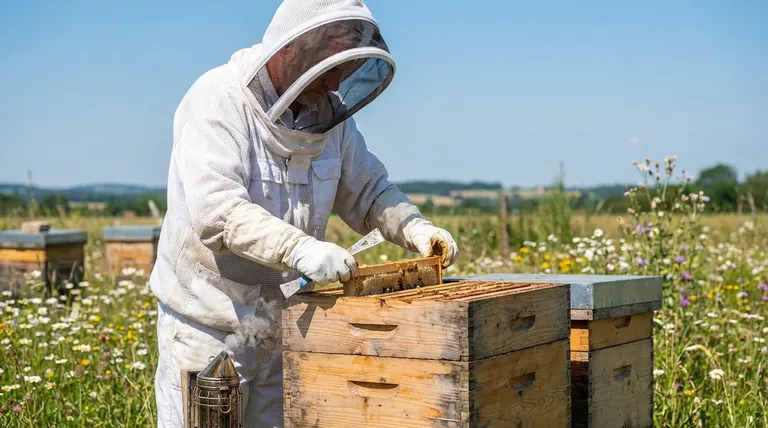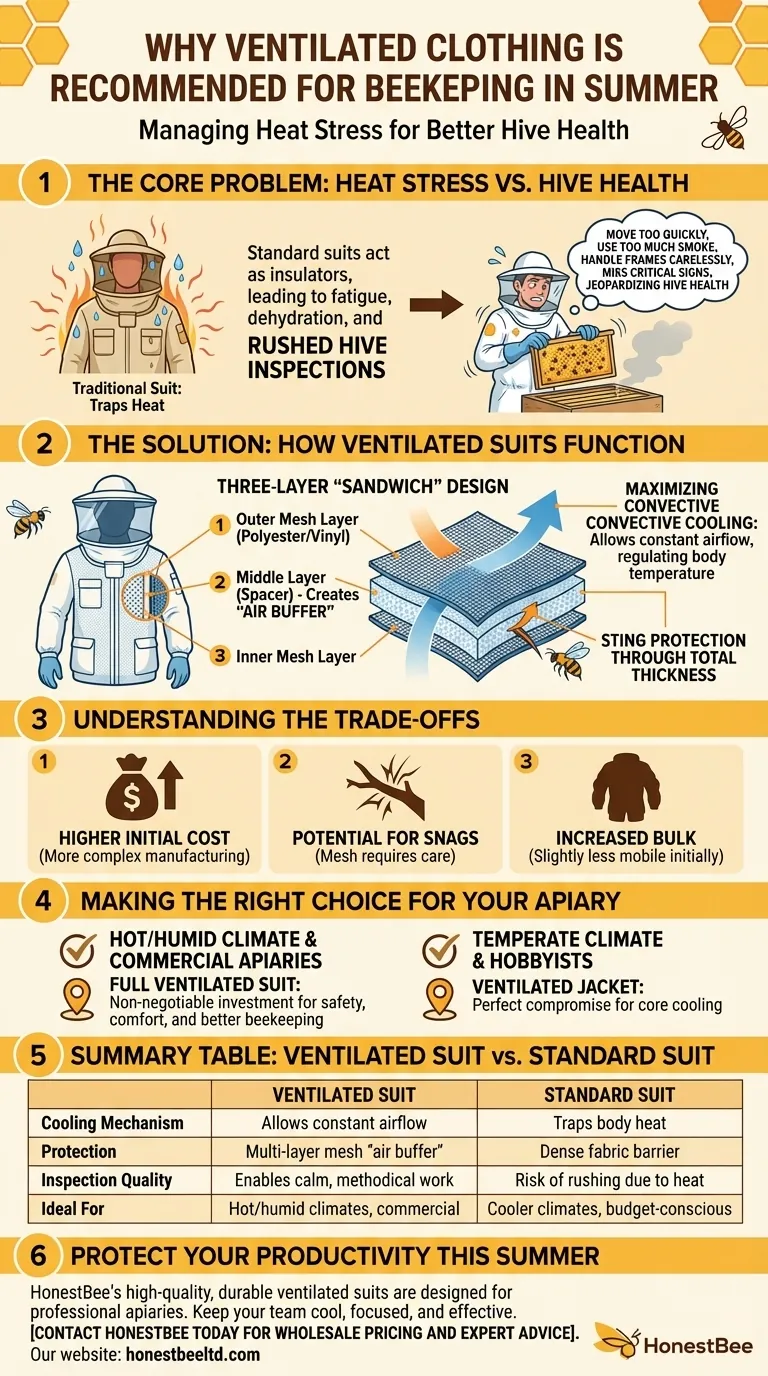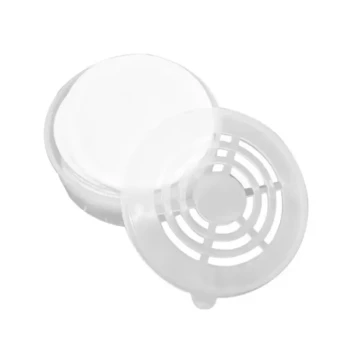Ventilated beekeeping clothing is recommended for summer because it is specifically designed to manage the critical challenge of overheating. Standard suits trap an immense amount of heat, which can lead to fatigue, dehydration, and dangerously rushed hive inspections. Ventilated suits solve this by using a multi-layer mesh construction that allows for constant airflow while still providing proven protection from stings.
The core issue in summer beekeeping isn't just personal discomfort—it's the risk that heat stress poses to your bees. A beekeeper who is overheating cannot be calm, focused, and methodical, jeopardizing hive health. Ventilated gear is the technical solution to this human factor.

The Core Problem: Heat Stress vs. Hive Health
Traditional beekeeping suits, while effective against stings, create a significant secondary hazard in warm weather: heat stress. Understanding this dynamic is key to appreciating the value of ventilation.
The Danger of a Rushed Inspection
When you overheat, your body's primary goal is to escape the heat. This physical and mental stress leads to irritability and poor decision-making.
In beekeeping, this manifests as a rushed hive inspection. You might move too quickly, use too much smoke, or handle frames carelessly, which can injure bees, damage comb, and even kill the queen. More importantly, you are more likely to miss subtle but critical signs of disease, pests, or a failing queen.
How Traditional Suits Act as Insulators
A standard beekeeping suit is typically made from a dense-weave cotton or poly-cotton blend. While this thickness prevents stingers from penetrating, it also traps body heat and moisture with extreme efficiency.
This turns the suit into a personal sauna, drastically accelerating the onset of heat stress, even on moderately warm days.
How Ventilated Suits Function
Ventilated suits are not simply thinner material; they are an engineered system designed to balance protection and cooling. They typically use a three-layer "sandwich" design.
The Multi-Layer Mesh System
Most ventilated suits consist of two outer layers of polyester or vinyl mesh with a thicker, more rigid mesh layer in between. This middle layer acts as a spacer.
This construction creates a significant gap of air between the outer surface of the suit and your body.
An "Air Buffer" for Sting Protection
Protection comes from the total thickness of the three layers. A bee's stinger is physically too short to bridge the gap from the outer mesh layer, through the middle spacer, and to your skin.
It is this depth, not the impenetrability of the material itself, that provides sting protection.
Maximizing Convective Cooling
The open-weave mesh of all three layers allows air to pass through the suit freely. Even a slight breeze can penetrate the material, carrying away the hot, humid air trapped against your skin.
This process, known as convective cooling, is incredibly effective at regulating body temperature and is the primary reason ventilated suits keep you so much cooler.
Understanding the Trade-offs
While highly effective, ventilated suits are not without their considerations. Being objective about them is crucial for making an informed decision.
Higher Initial Cost
Ventilated suits are more complex to manufacture than standard cotton suits. This engineering and material cost means they are almost always more expensive upfront.
Potential for Snags
The mesh material, while durable, can be more susceptible to snagging on sharp hive corners, thorns, or branches than a solid cotton canvas. Care must be taken to avoid tearing the outer layer.
Increased Bulk
The three-layer system that provides the protective air gap also adds bulk and a degree of stiffness compared to a single-layer cotton suit. While most beekeepers adjust quickly, some may find it slightly less mobile initially.
Making the Right Choice for Your Apiary
The decision to invest in a ventilated suit depends entirely on your climate, the scale of your operation, and your personal tolerance for heat.
- If you are a beekeeper in a hot or humid climate: A full ventilated suit is a non-negotiable investment in your safety, your comfort, and your ability to be a better, more observant beekeeper.
- If you are a hobbyist in a temperate climate: You may find a ventilated jacket is the perfect compromise, providing core cooling while allowing you to use durable pants you already own.
- If your primary concern is budget: A standard, high-quality cotton suit in white will serve you well. Focus on working during cooler parts of the day and be vigilant for signs of heat stress.
Investing in the right protective equipment allows you to stop worrying about the heat and focus on what truly matters: the health and productivity of your hives.
Summary Table:
| Feature | Standard Suit | Ventilated Suit |
|---|---|---|
| Cooling Mechanism | Traps body heat | Allows constant airflow |
| Protection | Dense fabric barrier | Multi-layer mesh 'air buffer' |
| Inspection Quality | Risk of rushing due to heat | Enables calm, methodical work |
| Ideal For | Cooler climates, budget-conscious | Hot/humid climates, commercial apiaries |
Protect Your Productivity This Summer
As a commercial beekeeper or equipment distributor, your efficiency is paramount. Heat stress from standard suits leads to rushed inspections and costly mistakes. HONESTBEE's wholesale-focused operations provide high-quality, durable ventilated suits designed for the demands of professional apiaries.
Invest in gear that keeps your team cool, focused, and effective. Let's discuss equipping your operation with the right protective clothing to safeguard both your beekeepers and your hives.
Contact HONESTBEE today for wholesale pricing and expert advice
Visual Guide

Related Products
- Wholesales Dadant Size Wooden Bee Hives for Beekeeping
- Professional Insulated Plastic Bee Hives
- Long Langstroth Style Horizontal Top Bar Hive for Wholesale
- Professional Insulated Winter Hive Wrap for Beekeeping
- Automatic Honey Flow Beehive 4 Frame Mini Hive for Beekeeping
People Also Ask
- What are the characteristics of oil-based paint for beehives? Durability vs. Modern Practicality
- What is beekeeping equipment? Essential Tools for Commercial Apiaries & Distributors
- What are the essential pieces of equipment for most beekeepers? Get Started with the Right Gear
- What types of products are available for beekeeping needs? Essential Equipment for Apiaries & Distributors
- What should beginners consider when purchasing beekeeping equipment? A Guide to Essential Starter Gear



















